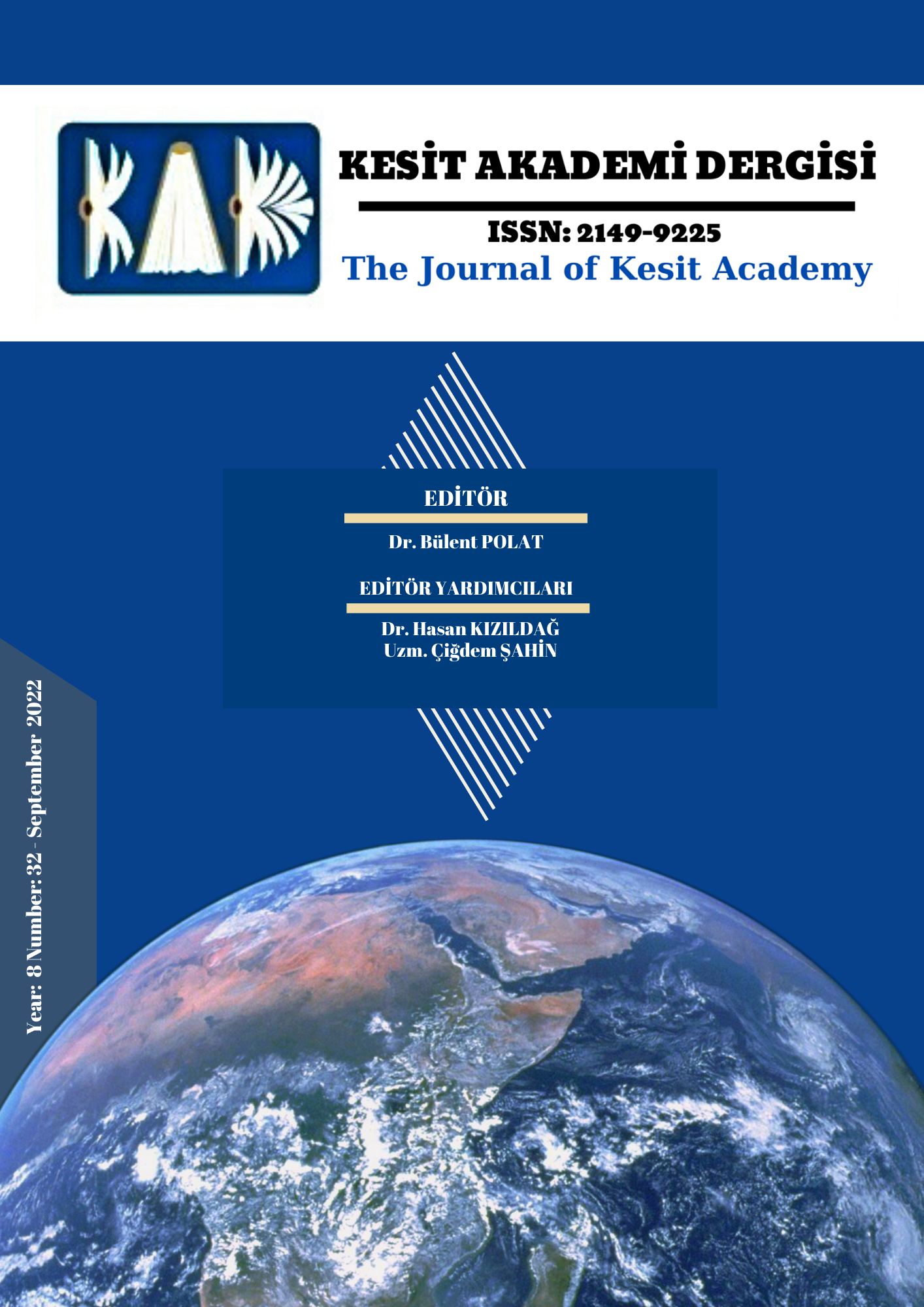Author :
Abstract
Hareketli afiş, fotoğrafların, görüntülerin, metinlerin, videoların belli bir plan ve bütünlük içerisinde, dijital ortamda hareketi sağlayacak sistematikle ve bazen de hareketin algılanmasını kolaylaştıracak ekstra eklenen ses efektlerinin birleştirilmesiyle ve tüm bunların da belirli bir düzende tasarlanmasıyla oluşturulan bir üretimin bütünüdür. Bu üretim sürecinde tasarımcının, hareketi kurgularken afişi bir bütün olarak ele alması ve diğer tüm ögeler ile ilişkisini dengede tutması önem arz etmektedir. Afiş tasarımında hareket algısı oluşturma çabasının, çoğu zaman afişin temel yapı taşlarından biri olan mesaj iletme amacının önüne geçtiği görülmektedir. Tasarımcı, afişte hareket desteği ile mesajı karşı tarafa iletmeye çalışırken, izleyiciler, hareket algısına kapılıp verilmek istenen mesajı ikinci plana atabilmektedir. Uygulanan hareketin hızı, boyutu, afişteki konumlandırılışı gibi birçok faktör bu süreci etkilemektedir. Hareketli tasarımlar, günümüz tasarım dünyasında yaygın olarak kullanılan grafik tasarım ve animasyon kavramlarının bir sentezi durumundadır. Disiplinlerarası çalışmalar olmakla birlikte; Adobe Photoshop, Adobe After Effects, Adobe Premiere Pro, Adobe Animated, Maya, 3D Max, Cinema 4D, Moho, Nuke, Houdini, Maya, Syntheyes, DragonBones vb. destekleyici programlar vasıtasıyla tasarlanabilirler. Ancak tasarımcı ya da animatör belirli bir yetkinliğe ulaşmadan, tasarımda disiplinlerarasılığı göz ardı edip bu süreci tek başına çözümlemeye çalışırsa bir dizi problem ortaya çıkmaktadır. Araştırma bu problemlerin en önemlisi olan ‘hareket ve mesaj ilişkisi’ne ışık tutmayı amaçlamaktadır. Bu araştırmada, nitel ve nicel araştırma yöntemlerini kapsamı içine alan karma yöntem deseninden “Birleştirme (Çeşitleme) Deseni” kullanılmıştır. Araştırmada elde edilen bulgular eşliğinde çoğu zaman tasarımcının hareket üzerine yoğunlaşıp tasarımın bütünlüğünü koruyamadığı ya da aksine tasarımı başarılı bir şekilde icra edip, hareketle tasarımı bütünleştiremediği ve hareketin mesaj kaygısının önüne geçtiği gözlemlenmiştir. Hareket ve mesaj ilişkisi probleminin, araştırmadaki anket sonuçlarına yansımasına bakıldığında ise; geleneksel afişin daha anlaşılır ve algılanabilir olduğu, hareketli afişin ise algılanabilir olmaktan ziyade daha dikkat çekici olduğu sonucuna varılmış; tasarımcıların bu doğrultuda tasarımlarındaki hareketin yapısına yön vermeleri üzerine önerilerde bulunulmuştur.
Keywords
Abstract
A moving poster is the whole of a production created by combining photos, images, texts and videos in a certain plan and integrity, with the systematic that will provide motion in the digital environment, and sometimes with sound effects that will facilitate the perception of extra movement, and by designing and preparing them in a certain order. In this production process, it is important for the designer to consider the poster as a whole while constructing the movement and to keep its relationship with all other elements in balance. The effort to create a perception of movement in poster design overtakes the purpose of conveying a message, which is one of the basic building blocks of the poster. While the poster aims to convey the message to the other party via the perception of motion, the viewer may get caught up in this perception of motion and this may push the message to be given into the background. A number of elements such as the velocity of the applied motion, its size and positioning on the poster affect this process. Animated designs are a synthesis of graphic design and animation concepts that are widely used in today's design world. Although they are multidisciplinary studies, they can be designed through supporting programs such as Adobe Photoshop, Adobe After Effects, Adobe Premiere Pro, Adobe Animated, Maya, 3D Max, Cinema 4D, Moho, Nuke, Houdini, Maya, Syntheyes and DragonBones. However, if the designers or animators ignore the interdisciplinarity in design and intend to solve this process on their own before they reach a certain experience, a series of problems arise. The research aims to shed light on the most important of these problems, the relationship between motion and message. In this research, the "Combination (Diversification) Pattern", a mixed method pattern including qualitative and quantitative research methods, is used. In the light of the findings obtained in the research, it is observed that most of the time, the designer concentrates on the motion but could not protect the integrity of the design, or on the contrary, successfully executes the design but could not integrate the motion in the design, and the motion overtakes the concern for the message. When considered the reflection of the motion and message relationship problem on the survey results; it is concluded that the traditional poster is more understandable and perceptible, while the moving poster is more eye-catching; accordingly, suggestions are made for designers to direct the structure of the movement in their designs.
Keywords
- Atasoy, S. (2018). Afiş tasarımında artırılmış gerçeklik uygulamaları *Yayımlanmış sanatta yeterlik tezi]. Hacettepe Üniversitesi Güzel Sanatlar Enstitüsü.
- Becer, E. (2002). İletişim ve grafik tasarım. Dost Kitabevi Yayınları.
- Creswell, J. W. (2019). Karma yöntem araştırmalarına giriş (Çev.: M. Sözbilir). Pegem Akademi.
- Dawson, C. (2015). Araştırma yöntemlerine giriş (Çev.: A. Arı). Eğitim Yayıncılık.
- Kirişcan, B. (2021). Türkiye`de hareketli afişin ontolojisi. Sanat ve Tasarım Dergisi, 11 (1), 208-227. https://doi.org/10.20488/sanattasarim.971357
- Krasner, J. (2008). Motion graphic design applied history and aesthetics. Elsevier Inc.
- Lupton, E. & Philips, J. C. (2008). Graphic design the new basics. Princeton Architectural Press.
- Özkirişçi, İ. H. (2016). Tiyatro afişlerinin grafik tasarımda görsel algı açısından incelenmesi ve hareketli afiş uygulamaları [Yayımlanmış yüksek lisans tezi]. Hacettepe Üniversitesi Güzel Sanatlar Enstitüsü.
- Tabachnick, B. G. & Fidell, L. S. (2013). Using multivariate statistics (6th Ed). Allyn & Bacon.
- Türkmenoğlu, H. ve Akengin. G. (2016). Hareketli grafik tasarım sürecinde yazı devi- nimi. İdil Dergisi, , 5 (23), 895-908. http://doi: 10.7816/idil-05-23-07
- Walter, S. RJ. (2007). Motion blur 2: multidimensional moving imagemakers; (Adventures in Moving Image). Laurence King Publishing.





